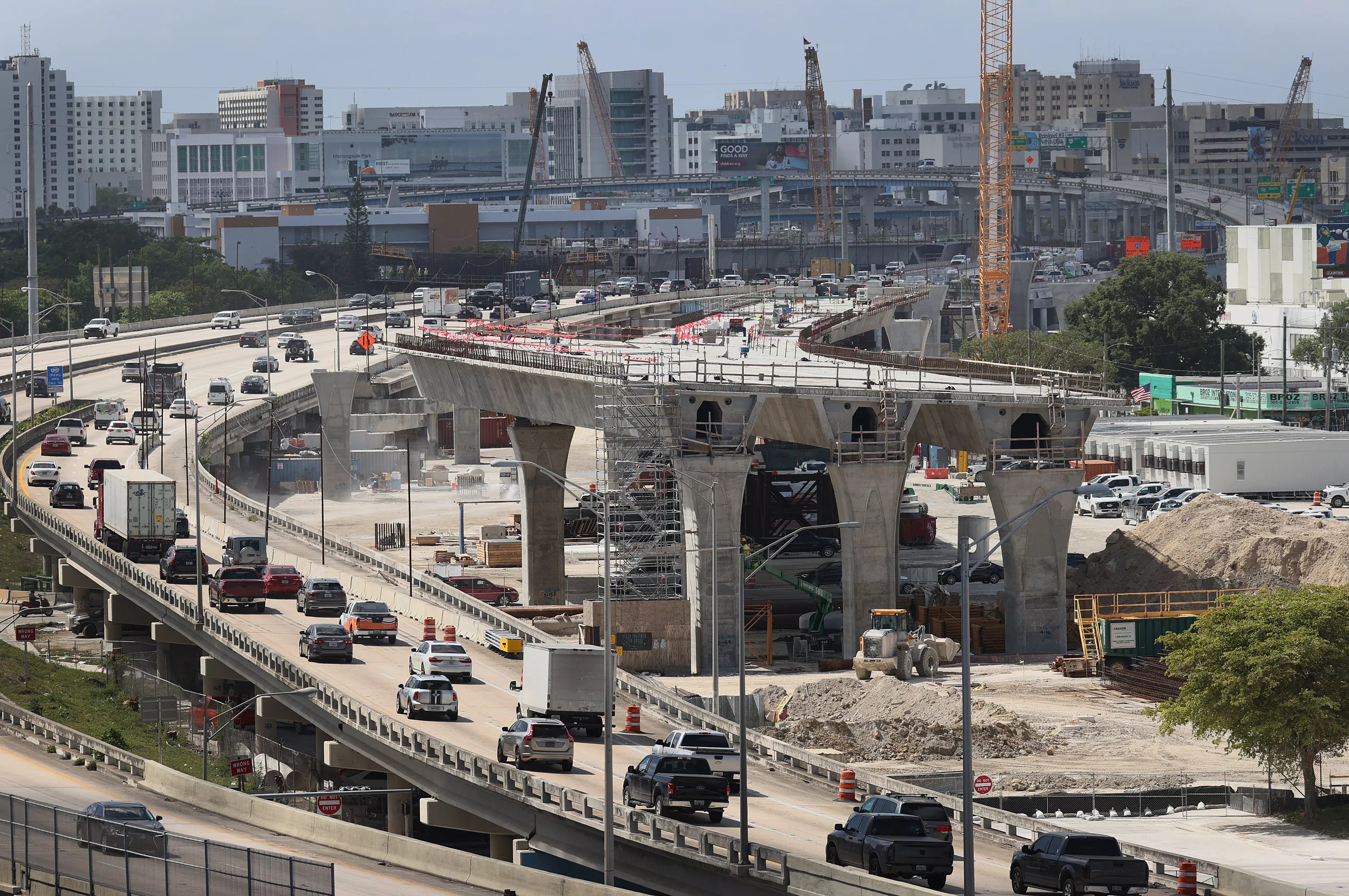
Photo by Joe Raedle/Getty Images

Audio By Carbonatix
Ray Delahanty, an urban planning and transportation expert, has spent the last two years trekking across the U.S. and reporting on cities’ public transportation systems for weekly videos on his popular CityNerd YouTube channel.
At the invitation of the nonprofit Transit Alliance, Delahanty recently paid a visit to South Florida for his segment “Miami: Ultra-Livable Paradise or Car-Dependent Nightmare” – in which he scoped out our humble cityscape and put his figurative magnifying glass on the Metrorail and the local pedestrian infrastructure (or lack thereof).
How did we fare?
While Delahanty was “pleasantly surprised” by the county’s Metrorail – saying it was a good skeleton to build more public transportation – he spent much of his monologue skewering Miami-Dade’s transit and street designs.
For Delahanty, one thing became clear: “Miami is walkable urbanism for the rich and car dependency for everyone else.”
In higher-income neighborhoods, such as Miami Beach, Coral Gables, and Coconut Grove, Delahanty noted that there were ample pedestrianized zones and lush tree canopies for shade while lower-income areas and historically Black communities like Liberty City and Overtown were urban heat islands, transit deserts, and home to some of the county’s most unsafe intersections.
The observations may not be news to longtime locals, but the disparity was enough to jar Delahanty, an outsider with infrastructure expertise and a pair of fresh eyes, as it was his first visit to Miami.
“It did feel like there’s a stark contrast,” Delahanty tells New Times.
At times, Delahanty says he had a nagging fear of death while trying to cross wide, busy Miami-Dade roads, some of which had broken crosswalk signals. His trek along South Dixie Highway was particularly vexing.
“When I would hit the button waiting, there would clearly be a time when the walk signal was supposed to come up, and it just didn’t,” he says. “That’s a huge problem because it leaves the pedestrian in the position of trying to guess whether it’s safe to cross the street or not.”
It wasn’t all gripes and sour grapes in CityNerd’s infrastructure assessment.
Delahanty says he thought the Metrorail service was “pretty good,” and that he appreciated its air-conditioned cabins, especially during the punishing summer heat.
“Miami’s probably a little smaller than Dallas and Houston, and it is way beyond those cities in terms of transit,” Delahanty tells New Times. “It’s in the middle of the pack in a way, but it really does have the kind of spine of metro rail service that you would hope the region is able to build upon and leverage with bus service and the Metromover that connects to it.”
He was disappointed, however, that the system does not reach farther out of Miami’s urban center. Since the 1980s, the county has failed to fulfill its promise to expand the Metrorail to more northern neighborhoods.
The accessibility surrounding Metrorail stations is, to put it lightly, less than intuitive, in CityNerd’s view. He noticed that at some Metrorail station entrances, riders have to traverse busy Dixie Highway crossings or go up and down more than one flight of stairs. He called the Douglas Road station a “chutes and ladders situation” in his video.
Delahanty also was shocked that a rail connection to Miami Beach still has not been built.
Transit Alliance Miami, the nonprofit that invited Delahanty, “advocates for walkable streets, bikeable neighborhoods, and better public transit in Miami-Dade.” The group asked him to drop into the Magic City at the height of our historic heat wave to analyze Miami’s public transit system following the release of the Transit Alliance’s 2023 Mobility Scorecard. The report highlights the performance of county and municipal mobility options in addition to safety issues for pedestrians and cyclists.
“There are statistics out there about how younger people are driving less, how people, especially younger people, want more walkable communities,” Transit Alliance policy manager Mark Merwitzer tells New Times. “We wanted to share this message with them, and he’s a great person to do that.”
Delahanty says one main takeaway from his visit was that the Florida Department of Transportation is heavily investing in the state highway system while the rail system and other modes of public transportation are, by comparison, left in the dust. Big-ticket road construction projects, namely the $840 million Signature Bridge project downtown, were clearly the priority, as CityNerd saw it.
“If you keep building freeways and reinforcing that idea that you need to get a car to go everywhere, that’s what you’re gonna get. It’s kind of a self-fulfilling prophecy,” Delahanty tells New Times. “There needs to be some sort of balance.”